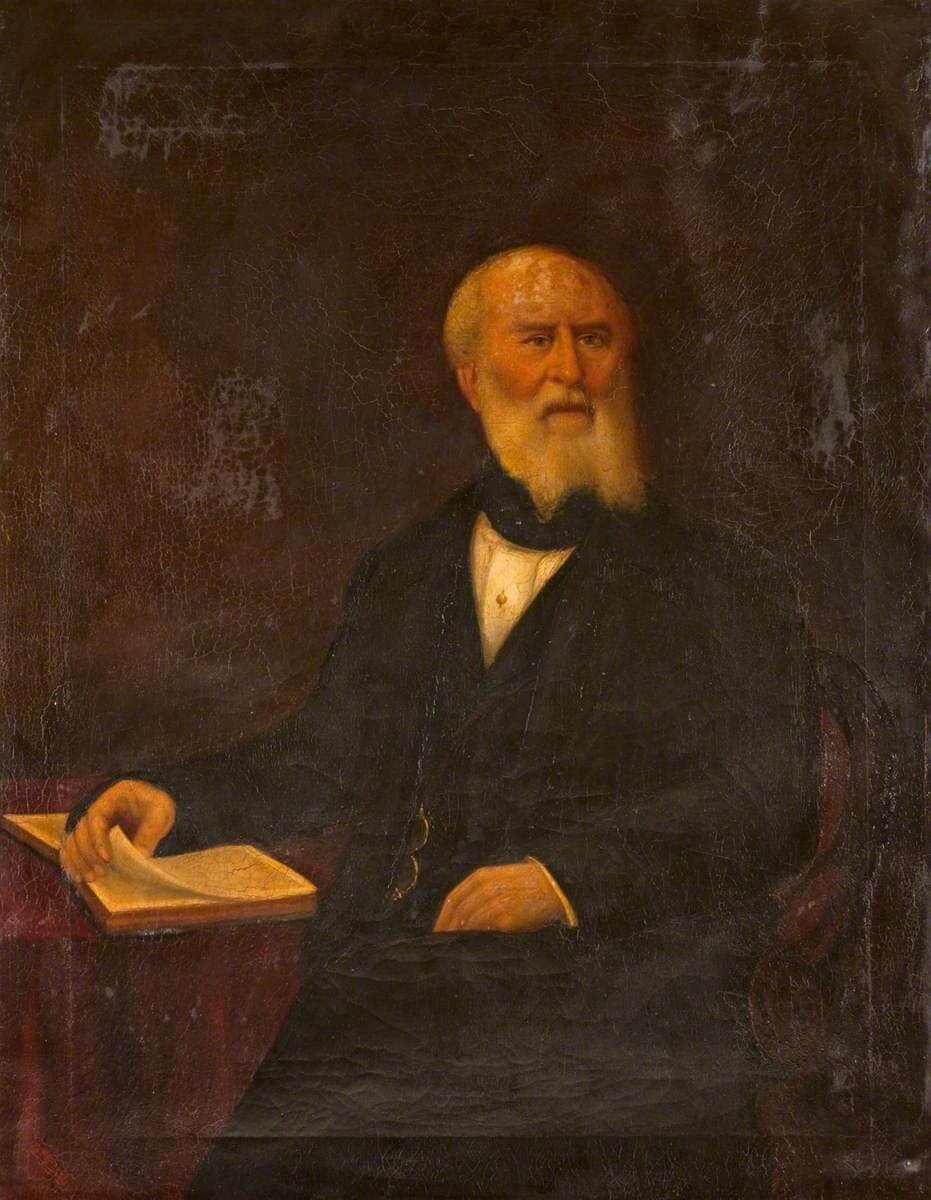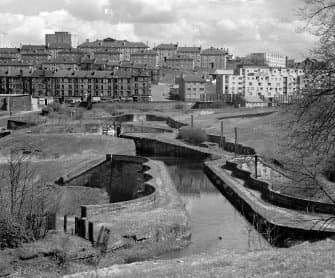Maryhill: Tales of Temperance
Words by Ruairi Hawthorne
About twenty minutes from where I live, in the churchyard of the New Kilpatrick Parish Church in Bearsden, lies a very unique obelisk. It depicts a bridle hanging from a nail, a symbol of restraint and self-control. It is a commemoration of a man named James Stirling who, in 1832, made a pledge with seven other men to abstain from the consumption of alcohol and spirits for the rest of their lives. This would lead to the formation of the British Association for the Promotion of Temperance in 1835, and in good time many more working-class men made the same pledge.
You see, by James Stirling’s death in 1855, such commemorations where reserved only for those of high stature or renown, which is a real testament to the impact that James and his fellow founders of the BAPT made on the lives of many working-class drinkers, inspiring them to pledge abstinence and better their lives. This is best exemplified by the epitaph on James’s tomb, which reads: "He brought happiness to many homes where unbridled drunkenness has caused despair'. It can’t be denied that drink and drunkenness was ingrained into the lives of working men and led to much hardship, but why was this the case? Also, why was this plague of "unbridled drunkenness" so frowned upon by society’s upper echelons, despite drinking itself being so prominent in all social spheres? Finally, how did organisations like the BAPT try to combat it?
First Breaths
John Dunlop’s Portrait
The first breaths of the temperance movement in Scotland came on October 5th, 1829, with the formation of the Glasgow and West of Scotland Temperance Society. It was created by John Dunlop, who is now seen as the father of the temperance movement in Britain. He was a landowner and family man who had witnessed the decay and destitution that alcohol dependence had brought on men and their families. Shortly after John Married, his father, who was a wealthy banker, went bankrupt, threatening John’s inheritance and his family. John spent this time when his future was uncertain in prayer and contemplation, thinking about what he would do to cure society’s woes if he had the resources. Fortunately, this matter was quickly resolved thanks to a legacy bailout and soon his inheritance was secured. After being faced with losing everything, John endeavoured to use his inheritance for the betterment of others by combating what he saw as the greatest threat to industry, family life and finance: alcohol abuse.
At the first gathering of his new sobriety society in Greenock, he declared that he would forever abstain from partaking in spirits and stated his belief that poor education was one of the main contributors to the “demons drink” having such a strong hold on Scotland’s workers. That night, four other men made the same promise after hearing Dunlop speak. Sound familiar? This was known as the pledge, and it laid the foundation for a concept that is still found in modern AA and temperance groups to this day. While this many pledges may seem like a paltry number, it was more than enough for Dunlop, and the success he found with saving these four souls was all the inspiration he needed to continue his dry crusade. Where did he take his sobriety sermons next? Why Maryhill of course.
Moderation in Maryhill
In 1829, Maryhill was still a plucky little burgh that had yet to become part of Glasgow. It quickly earned the moniker “Venice of the North”, which was in reference to its dependence on its vast canals to accommodate it's production of vital resources. While this proved to be prosperous for the once humble burgh and provided many men with steady employment, the work was far from comfortable, and many of Maryhill’s men turned to liquid courage to kill the pain of their labour and forget the day’s hardship. At this point Maryhill had 23 pubs, which meant that there was one pub for every 57 residents, more than enough to drown one’s sorrows. It couldn’t have been more appropriate that this was where Dunlop turned his gaze next. Maryhill became the sight of one of the first British temperance societies, created as a combined effort between himself and his aunt Lilias Graham, who was a significant temperance crusader in her own right. John and Lilias took the Maryhill movement very seriously and may have considered this to be a familial duty, as they could both easily trace their heritage to the burgh’s creation. You see, Lilias was formerly known as Lilias Hill, daughter of Mary Hill herself!
In his ongoing quest to promote his spite towards spirits, Dunlop was filling the various venues of his grandmother's home with its many labourers, who had fallen victim to the demons drink to some extent. However, no matter how many of Maryhills children took the pledge at the end of the night, Dunlop's message of moderation and moral resilience was severely limited by two main factors. The first was that he was only one man, and he could not keep track of his pledges after he had finished his lecture. These men could try there hardest to live by his words but there was no one to go to for guidance if they found themselves tempted back to the simple comfort of alcohol. Secondly, even if every single man that swore to moderate their intake was able to stand by their pledge, Dunlop could only take his message so far due to the inherent limitations of transport at the time.
Allies
William Collins’ Portrait
Both of these placed severe restrictions on the scope and duration of Dunlop's influence, reguardles of how rousing his speeches where. In another striking parallel with his Grandmother's tale, the solution to John's two greatest obstacles would arrive without his influence or control. The first was in the form of an ally: William Collins, a publisher whose company is now known as Harper Collins. Despite the magnitude of his publishing house now, he began his working life working in a mill, and quickly noticed the often-drunken state of many of its employees, including the women. He found the frequent inebriation of the mill girls to be particularly disturbing, which eventually caused him to leave the mill and use his experience there to open a publishing house, which was simply named "William Collins Sons". However, Collins was not content to use his newly established company as merely a means of lining his pockets and climbing the economic ladder. Like his future colleague Dunlop, he was a first-hand witness to the destructive influence of drink on workers and wanted to use his newfound wealth to make a difference.
However, there was a key difference between the two: Williams, possibly due to having a more first-hand account of the societal woes wrought by alcohol, believed in absolute abstinence. He believed that most of the less fortunate members of society could not be trusted to simply moderate their alcohol intake, and that if they wanted to exercise control of their physical and mental well-being, they would have to quit all together. While this fundamental difference in approach would cause conflict between the two, they had a mutual respect and recognised that they both needed each other. Collins needed Dunlop to spark interest in the Temperance movement were ever they went with his way for words and passionate speeches, while Dunlop needed Collins to reinforce his message with pamphlets, posters and books. However, the second problem that limited to spread of the duo's message still persisted, transport. However, this would soon change with the advent of Britain's new, vast network of railway tracks. This innovation would assist Dunlop and Collins in carrying their message all over Britain. The relationship would eventually collapse under the weight of the pairs fundamentally different approach to temperance, with Collins being drawn to the allure of the growing prohibition movement, and Dunlop left to overcome being ostracised by the wider temperance movement on his own.
Kelvin Aqueduct, Maryhill.
As I mentioned before, Dunlop was convinced that there was more than drink to blame for the woes of the working class, namely, poor education and working conditions, as well as the drinking culture that had rapidly normalised public drunkenness. The former ensured that those who could not pay for a private education where almost certain to pursue unskilled labour as they weren't equipped to work in any other field. The latter ensured that the aforementioned unskilled labour would be mentally and physically painful enough to drive most men to the blissful warmth of liquor. However, among both allies and among those who made the pledge, Dunlop's calls for social reform often fell on deaf ears, with his colleagues often claiming that self-control was the only obstacle on the path to sobriety and his pledges seeing widespread improvement of education and workers’ rights as a pipe dream.
This wasn't helped by the fact that most British politicians would back the brewers and pubs when there was any talk of the country's problem with drink, with many seeing the temperance movement as a fad that would soon outstay it's welcome. However, the demand for social reform forced them to acknowledge the issue, although the only major legislative changes related to the subject was the mandatory price raising of alcohol, which only made the stuff more financially damaging to the less fortunate. In fact, John's brother, Alexander Dunlop was a prominent politician. He was one of the few who brought the issues of social and economic injustice up in parliament and was always trying to convince his brother to get into politics. However, John preferred to remain a civilian and he began working full time for the Temperance cause, losing most of his fortune in the process.He moved to London in 1836 and continued to dedicate himself to the movement until his death in 1868.
While his death may seem like a tragic one, he was survived by his wife, Janet, and his nine children. He was also father to an idea, that society could change for the better and that its less fortunate members didn't have to remain victims to the many destructive forces that had claimed the lives of so many. People like James Stirling continued to take the pledge, not just to abstain from alcohol but to strive towards a more kind and just society. I think now more than ever, Dunlop's dream is something that needs to become a reality.
Stirlings Grave. Photo Credit: Ruairi Hawthorne





